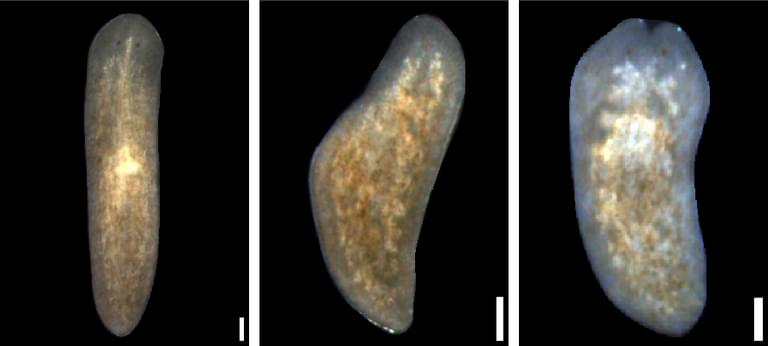Apple snails regenerate many body parts, and can even regrow their eyes, which are anatomically similar to human eyes with a lens, cornea, and retina. Scientists at the Institute are studying this naturally occurring regenerative ability with the hope to one day help humans suffering from eye injuries and damage like macular degeneration.
Perhaps the most impressive regenerative species studied at the Institute is the planarian flatworm—where a missing head is replaced in an average of two weeks. The mechanisms governing how these adult organisms regenerate tissues, organs, and even heads may one day provide answers for activating—or reactivating—regenerative capacity in humans.
Wound repair versus regeneration
Wound healing and tissue repair are intricate processes orchestrated by a highly coordinated cellular response. Following an injury, a complex cascade of events unfolds, involving various types of cells that receive and respond to signals instructing them to migrate to the affected site. As adults, our bodies attempt to heal and repair wounds, sometimes resulting in the formation of scars or scar tissue—a mass of cells that no longer function, marking the endpoint of the repair process.
However, in some species of adult animals, healing a wound is just the beginning of a journey. After responding to the wound, animals capable of regeneration build on this damage control reaction to activate a series of signals that lead to rebuilding the damaged tissues, and in some cases, the entirety of the missing body parts. Cells begin anew, receiving signals like the ones that directed our own early embryonic development, and allowed us to build tissues and organs. The question remains whether those cues have been lost or simply remain dormant in adults.
Researching regeneration for human health
Many animals have regenerative capabilities, even humans. And while we cannot replace a lost limb, humans do have certain abilities. One notable example of human regeneration is the production of blood cells. Stem cells residing in the bone marrow have the remarkable ability to generate millions of new red blood cells and other blood components rapidly. This continuous replenishment process allows us to maintain a healthy blood supply and recover from blood loss or injuries.
Studying the details and understanding regeneration in animals could hold clues for the future of healing, from injury to disease to potentially eliminating the need for organ transplantation. Understanding how cells perform regeneration and which signals are involved may yield hope for enabling this in humans.



